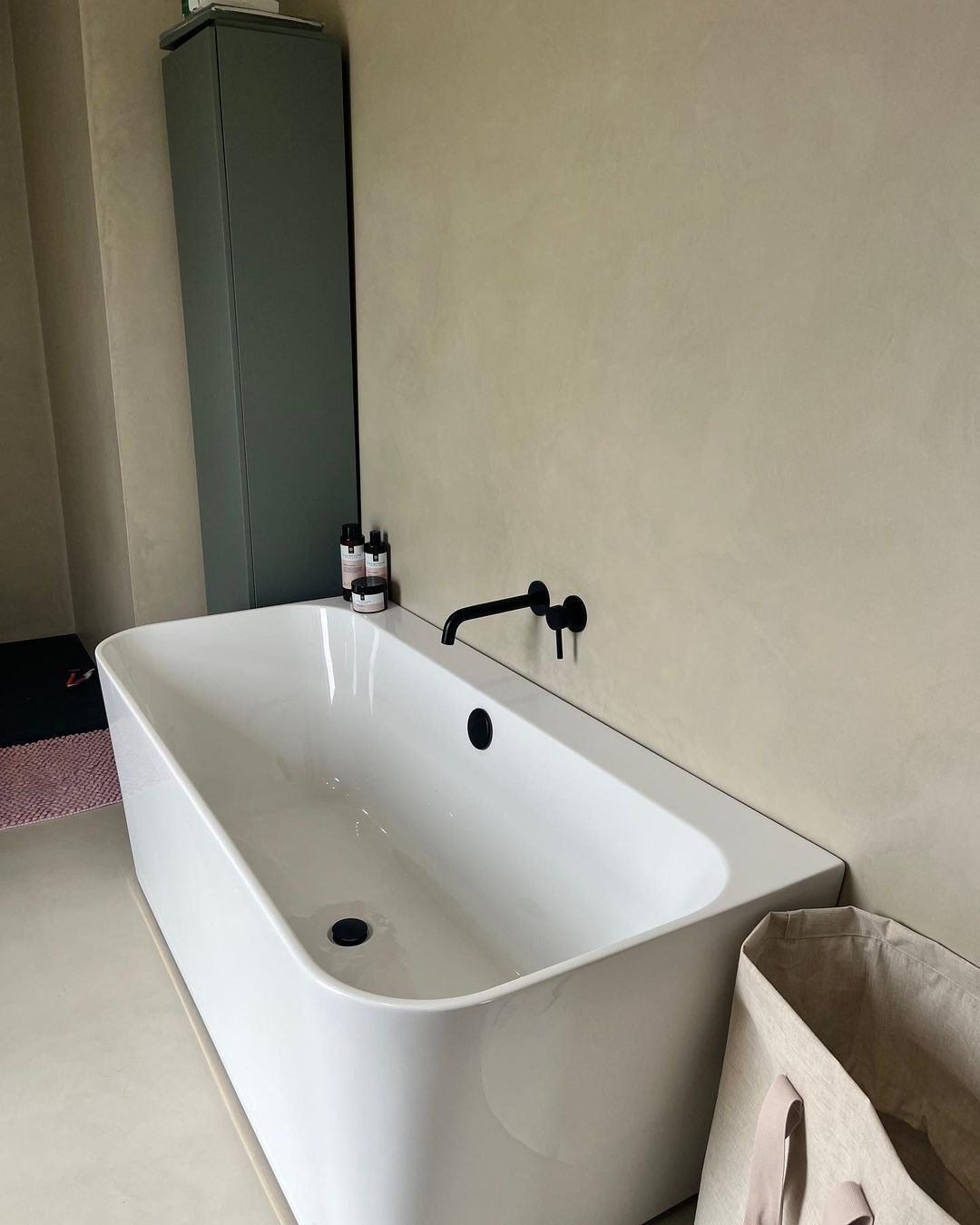Is Microcement Suitable for Wet Rooms?

Share
- Bathroom
- Flooring
- Home Renovation
- Interior Design
- Kitchen
- Microcement
- Microcement Application
- Microcemento
- Property Developement
Yes, Microcement is a suitable finish for bathrooms.
Microcement is a coating system, that includes different coats, some for decorative and some for practical purposes.
This allows Microcement to provide a seamless and water-resistant finish for interior surfaces, which makes it suitable for wet rooms.
But how does Microcement work, and what advantages does it offer for wet room areas?
1.It is Water-Resistant
The resin protector on the surface and an anti-crack system below ensure that water can’t penetrate the surface, making Microcement a suitable surface solution for any area exposed to water, such as bathrooms, showers, worktops, splashbacks and flooring.
The anticrack system that is installed with the basecoat of the Microcement was designed to help prevent any hairline cracks in the surface, which could lead to potential damage in the future, the finishing coat at the same time provides resistance against daily wear-and-tear and water.
This means that from the base coat to the finish, both of our Microcement options, Continuo and Allover were designed to be durable and water resistant.
2.It is Durable
The durability of the material is ensured for several different reasons, but it can be summed up in two main points.
Layering and composition.
Each component of the Microcement was designed and meticulously tested, to ensure each layer bonds to the other, as well as the substrate, and dries as it should. The excellence of our Microcement kits has been tried and tested on many projects, by experienced professionals who all agree on its durability and suitability for wet rooms.
Click on the links to get a sample kit of the Continuo or Allover microcement!
3.It’s an Aesthetic and Versatile Finish
Microcement became a popular choice for wet rooms, due to its seamless look and the bespoke finishes that can be created with it.
Whilst the exact process and finish you can achieve depends on the Microcement you choose, bespoke colouring is normally an option for all Microcements. Aside from the range of textures that can be created, our Continuo Microcement Kit also comes with three different types of protectors; matt, satin and gloss.
The sleek, modern look that can be achieved made Microcement a popular material, but its many varieties will ensure it’s a trend that will stand the test of time.
Check out our Mood Board Sets for the Continuo range here!
4.It’s a Hygienic Solution
As Microcement is a seamless surface solution, without any joints, it minimizes the possibility of dirt accumulating in certain areas. This ensures that regular cleaning with mild cleaning products will maintain the surface in its original state.
Due to the composition of the material, and the finishing coat, the surface of Microcement also offers a level of resistance against mould and mildew, making the maintenance even easier.
What to Consider When Applying Microcement in a Wet Room?
1. Proper Installation and Professional Application
As Microcement is a coating system with very technical details, that are specific to each supplier, it’s important to have it applied by a trained professional who has a good understanding of the system.
Microcement is a durable material, but to ensure this quality, it needs to be applied by a professional, as small mistakes can affect the product’s durability and performance.
To learn more about the application of Microcement, click on the link for a beginner or an advanced course!
2. Curing Time
Due to the complexity of the system, the layers needed to achieve the final look must be applied and allowed to dry properly. The time will largely depend on the component and its thickness, if you need to double-check details, available as data sheet on each product page.
For technical questions about the material, please don’t hesitate to contact us via email, at sales@imperaitalia.com.
3. Sealing
As a final coat, each Microcement system has a resin protector, that seals the previous layers and creates a water-resistant finish. To ensure maximum longevity, periodic resealing is recommended, every 5-10 years.
Our Continuo sealers are available in three different versions; matt, satin and gloss.
4. Slip Resistance
There are different solutions available to create slip-resistant surfaces in high-risk areas, which gives Microcement a significant advantage when it comes to safety.
To prevent slipping, anti-slip additives can be mixed into the sealer to improve traction. Opting for a textured finish could also be a good idea for wet room areas, or using non-slip treatments and mats.
Conclusion
Microcement is a great solution for wet rooms, and any surface exposed to water and humidity. Its resistance to water, durability and aesthetics make it a practical and stylish choice for homeowners and developers alike.
When it comes to a system as technical as Microcement though, we always recommend having a professional installer, as even little mistakes can be costly. When properly installed, Microcement can provide an aesthetic and durable finish that maintains its original appearance for decades with minimal maintenance.
Photo credit to DQ Surface Designs
@dq_surface_designs_training
